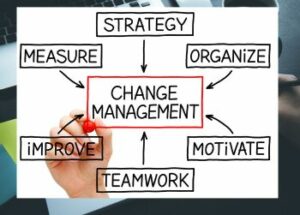“I’m so tired of managing my manager” sighed a friend. “How about a blog piece about that?”
So, you know who you are, and, without further ado, here’s our blog piece on managing up.
Articles
How to spot and manage an insecure boss
Offers five strategies for managing up with an insecure boss in order to make the situation work for you both.
Mostly on Managing Up.
NZBusiness+Management, February 1, 2023.
Provides suggestions to help determine if you are managing up effectively.
Why Managing Up Matters.
Simpson, Liz. Harvard Management Update 7, no. 8 (August 2002): 3-5
It isn’t manipulation. Clarifying the goals and limitations of the boss-employee relationship enables everyone to move on to the real business at hand.
How to Onboard Your New Boss
Hollister, R. and Watkins, M.D. (2023) Harvard Business Review Digital Articles, pp. 1–6
Reducing their learning curve about your organization, team, and culture will help set all of you up for success.
LinkedIn learning
Managing Up (Course)
Are you ready to take charge, do good work, and get noticed for it? If you don’t manage up, you may never have the opportunity to manage down. This course is designed to help you learn how to maximize your career by managing up. Leadership consultant and best-selling author Roberta Matuson explains what managing up is, what it isn’t, and why it is important to achieving success. First, she helps you decipher the management style of your boss. Then she outlines techniques for building a strong relationship as well as how to avoid mistakes. She also addresses the need to master office politics, how to navigate your workplace effectively, and how to boost your performance by maximizing your personal and positional power.
Managing Your Manager (Course)
In this course, author, keynote speaker, and coach Dr. Todd Dewett shows how to manage your reputation and one of your most important work relationships: your rapport with your boss. Discover how to understand your manager’s world, preferences, and lingo; support your boss’s goals; be a help rather than a hindrance; and lead by offering solutions. Plus, learn how to manage particularly difficult types of bosses, such as the boss who’s never available, the mean boss, or the boss who acts better than everyone else.
Book collection
The unwritten rules of managing up : project management techniques from the trenches / Brownlee, Dana
“What do you do when the biggest threat to your project is your boss? It’s not that your boss is out to get you. In fact, bosses generally mean well. But clueless leadership from a well-intentioned boss can sometimes cause more damage than a criminal mastermind tying your project to the railroad tracks. The Unwritten Rules of Managing Up provides refreshingly practical and candid insight into the best practices and techniques that project managers have successfully used for decades to manage a wide variety of senior-level stakeholders-ranging from perfectly competent and pleasant to downright dysfunctional and inept. While managing up is an incredibly valuable skill for virtually any type of boss (not just the difficult ones), the book includes recommendations for managing six particularly challenging-and common-types of senior leaders. … Brownlee also offers basic techniques to use with any boss, even a great one. This book is not just for professionals seeking to enhance their workplace effectiveness but also for senior leaders interested in addressing their blind spots and coaching others toward a more collaborative, results-focused leadership approach.” (Adapted from Catalogue) Available only as EBook Libby
Managing up : how to move up, win at work, and succeed with any type of boss / Abbajay, Mary
“Managing Up is your guide to the most valuable ‘soft skill’ your career has ever seen. It’s not about sucking up or brown-nosing; it’s about figuring out who you are, who your boss is, and finding where you meet. It’s about building real relationships with people who have influence over your career. Managing up is good for you, good for your boss, and good for the organization as a whole. This book gives you strategies for developing these all-important connections and building more than rapport; you become able to quickly assess situations, and determine which actions will move you forward; you become your own talent manager, and your boss’s top choice for that new opportunity. As a skill, managing up can do more for your career than simply ‘networking’ ever could and this book shows you how.” (Catalogue)
Managing up : how to forge an effective relationship with those above you / Badowski, Rosanne
“Everyone has a boss. And anyone who has aspired to move up the corporate ladder knows that their relationship with those they report to is crucial.” (Catalogue)
Managing your manager : how to get ahead with any type of boss / Dufour, Gonzague
“Learn how to effectively work with even the most difficult boss – and instantly position yourself for success. Placing manager “types” into real-world categories – from the Bully, Scientist, and Star to the Geek, Parent, and Con Artist – this book provides everything you need to make your work life more satisfying and productive.” (Catalogue)
A survival guide for working with bad bosses : dealing with bullies, idiots, back-stabbers, and other managers from hell / Scott, Gini Graham
“Being saddled with a terrible supervisor can turn even the best job into a nightmare. Unfortunately, not every boss is the great symbol of managerial perfection one would hope for. A Survival Guide for Working with Bad Bosses provides readers with savvy, practical advice for coping with managers and supervisors who are mean, incompetent, unethical, and worse.” (Catalogue)
Bad boss : what to do if you work for one, manage one or are one / Gibbings, Michelle
“At one time or another we’ve all had a bad boss – from bullying and intimidation, to unfair feedback and unrealistic workloads. Contrary to popular belief, most bosses don’t set out to be a bad boss, and yet they are. A bad boss’s behaviour sets the tone for what’s acceptable in the whole organisation and in doing so, can cause major issues for productivity, staff turnover and wellbeing. This book covers all three perspectives for the direct report, the boss and the boss’s boss. It could even be you! This book will help you identify is it them, is it you or is it the environment in which you work, with key actionable steps to turn things around.” (Catalogue)
How to lead when your boss can’t (or won’t) / Maxwell, John C.
“Learn the secrets of how to lead well and be successful even when working for an ineffective leader.” (Catalogue)
If you would like further information please contact the Prosearch team at the library. We can help you find information across a range of perspectives and resources. All enquiries are treated in confidence.







